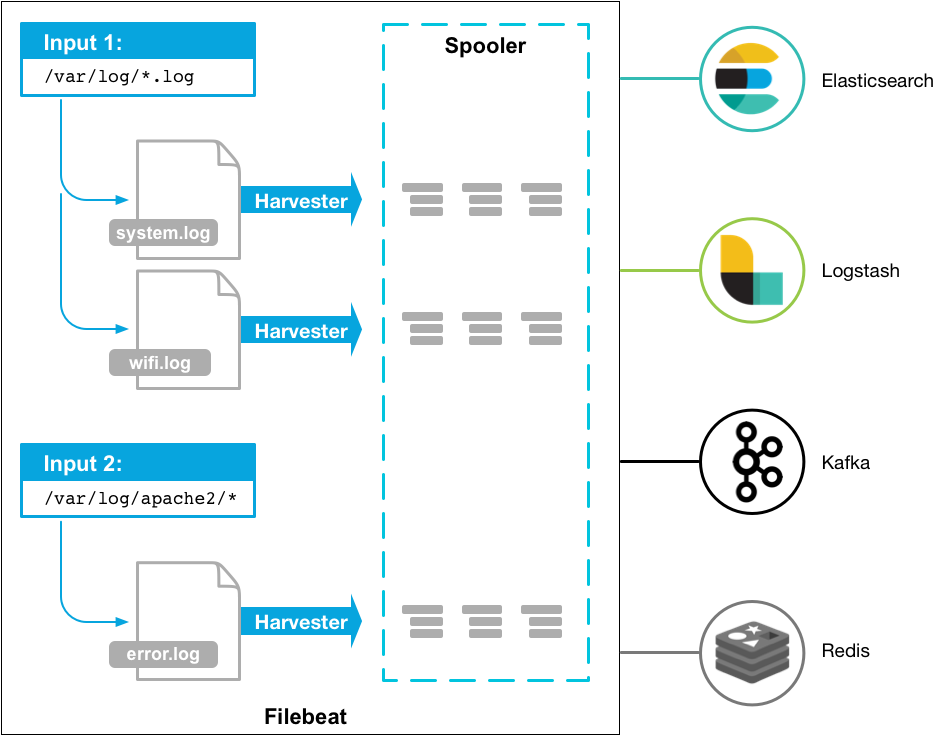- Filebeat Reference: other versions:
- Overview
- Getting Started With Filebeat
- Step 1: Install Filebeat
- Step 2: Configure Filebeat
- Step 3: Configure Filebeat to use Logstash
- Step 4: Load the index template in Elasticsearch
- Step 5: Set up the Kibana dashboards
- Step 6: Start Filebeat
- Step 7: View the sample Kibana dashboards
- Quick start: modules for common log formats
- Repositories for APT and YUM
- Setting up and running Filebeat
- Upgrading Filebeat
- How Filebeat works
- Configuring Filebeat
- Specify which modules to run
- Configure inputs
- Manage multiline messages
- Specify general settings
- Load external configuration files
- Configure the internal queue
- Configure the output
- Set up index lifecycle management
- Load balance the output hosts
- Specify SSL settings
- Filter and enhance the exported data
- Parse data by using ingest node
- Set up project paths
- Set up the Kibana endpoint
- Load the Kibana dashboards
- Load the Elasticsearch index template
- Configure logging
- Use environment variables in the configuration
- Autodiscover
- YAML tips and gotchas
- Regular expression support
- HTTP Endpoint
- filebeat.reference.yml
- Beats central management
- Modules
- Exported fields
- Alias fields
- Apache2 fields
- Auditd fields
- Beat fields
- Cloud provider metadata fields
- Docker fields
- elasticsearch fields
- haproxy fields
- Host fields
- Icinga fields
- IIS fields
- Kafka fields
- kibana fields
- Kubernetes fields
- Log file content fields
- logstash fields
- mongodb fields
- MySQL fields
- Nginx fields
- Osquery fields
- PostgreSQL fields
- Redis fields
- System fields
- Traefik fields
- Monitoring Filebeat
- Securing Filebeat
- Troubleshooting
- Migrating from Logstash Forwarder to Filebeat
- Contributing to Beats
Filebeat overview
editFilebeat overview
editFilebeat is a lightweight shipper for forwarding and centralizing log data. Installed as an agent on your servers, Filebeat monitors the log files or locations that you specify, collects log events, and forwards them to either to Elasticsearch or Logstash for indexing.
Here’s how Filebeat works: When you start Filebeat, it starts one or more inputs that look in the locations you’ve specified for log data. For each log that Filebeat locates, Filebeat starts a harvester. Each harvester reads a single log for new content and sends the new log data to libbeat, which aggregates the events and sends the aggregated data to the output that you’ve configured for Filebeat.

For more information about inputs and harvesters, see How Filebeat works.
Filebeat is an Elastic Beat. It’s
based on the libbeat framework. For more information, see the
Beats Platform Reference.